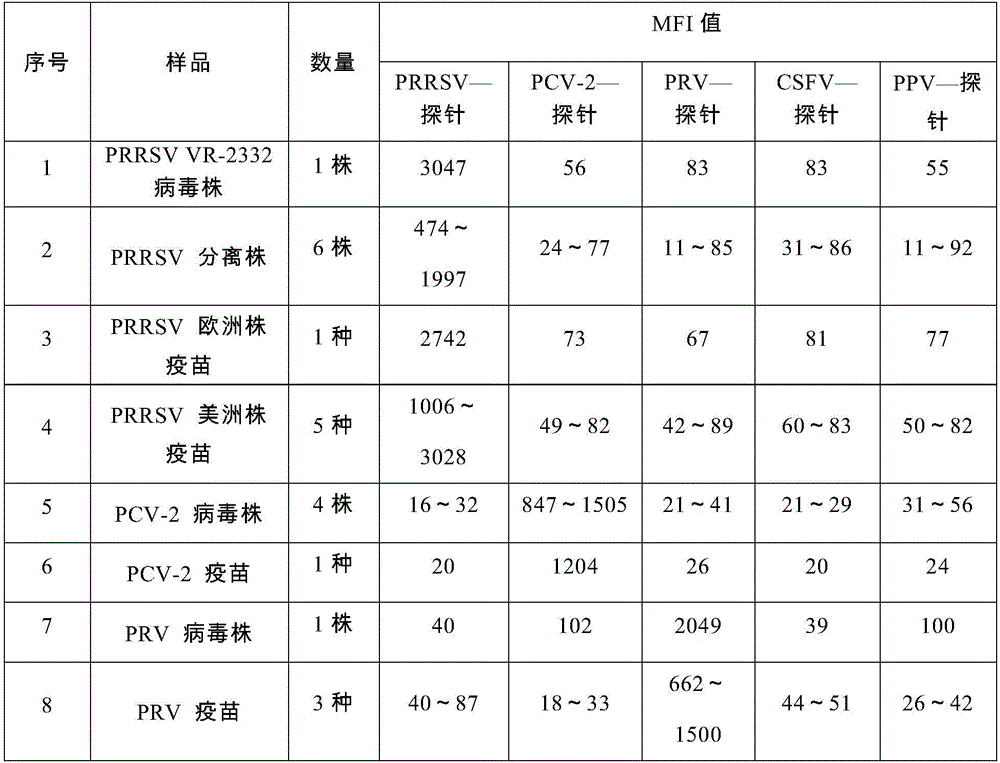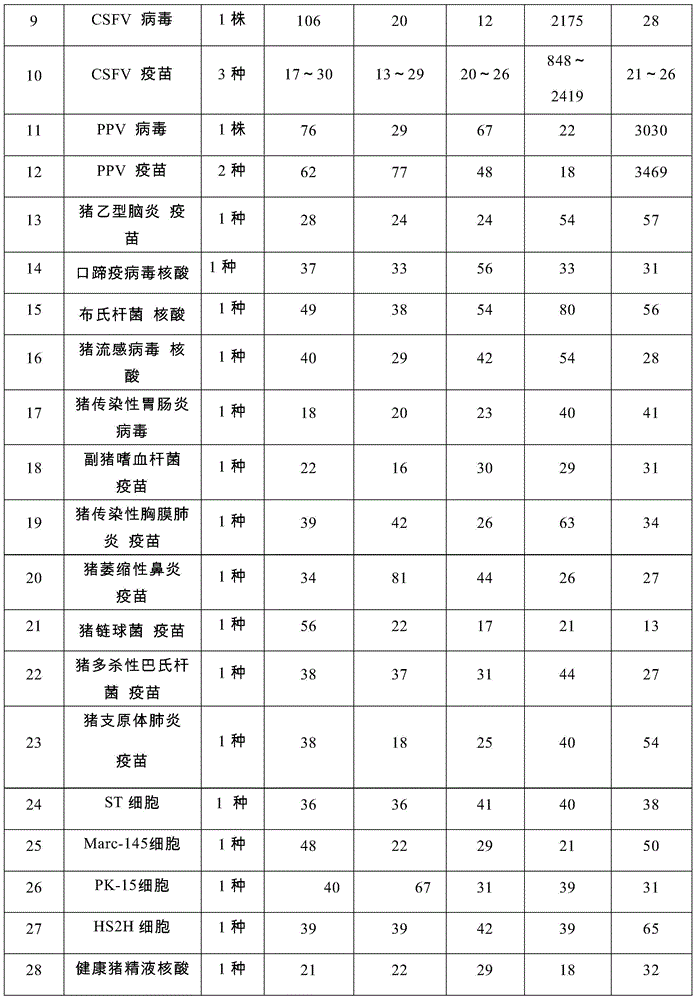Nucleic acid and detection method of liquid gene chip for simultaneous detection of five porcine viruses
A liquid-phase gene chip, synchronous detection technology, applied in the biological field, can solve problems such as difficulty and false positive results
- Summary
- Abstract
- Description
- Claims
- Application Information
AI Technical Summary
Problems solved by technology
Method used
Image
Examples
Embodiment 1
[0100] Example 1 Design and preparation of amplification primers and hybridization probes in the five-fold liquid-phase gene chip reaction system
[0101] Firstly, the specific target genes of the five viruses were screened separately. According to the purpose of detection, multiple viral gene sequences were downloaded from GenBank for each virus, compared and analyzed, and conserved regions were selected, and Array Designer 4.0 software was used to assist in the design of amplification primers and suitable A hybridization probe for a liquid-phase gene chip reaction system.
[0102] Liquid-phase gene chip detection is based on ordinary PCR detection, and further through the design of hybridization probes, PCR amplification products are melted and then hybridized with the hybridization probes, and the fluorescence value after the hybridization reaction is detected to determine the detection results. The premise of chip detection is to carry out PCR amplification reaction, the p...
Embodiment 2
[0111] Example 2 Establishment and optimization of five-fold liquid-phase gene chip detection reaction method
[0112] 1. Optimization of primer concentration in five-fold one-step asymmetric RT-PCR amplification reaction system
[0113] In the amplification reaction stage, the key lies in the ratio of labeled primers to unlabeled primers, which is a key factor in the liquid chip reaction system and has a great impact on detection sensitivity. In this step, the inventor has done a lot of optimization experiments. First, the five viruses were screened one by one for the dosage ratio of labeled primers and unlabeled primers. Different ratios were added to the reaction system, and the rest of the reaction conditions remained the same. The final detection MFI values corresponding to different primer concentration ratios were compared, and the primer ratio that could achieve the highest MFI value and lower background value and negative sample value was preferred. Add five pairs ...
Embodiment 3
[0139] Example 3 Five-fold liquid-phase gene chip detection method specificity, sensitivity, repeatability detection test and evaluation
[0140] 1 specific detection test
[0141] In order to verify whether the detection nucleic acid and detection method of the present invention are specific to the five kinds of viruses detected, the inventors of the present invention can only detect and identify these five kinds of porcine viruses, and will not cross-react with other viruses, resulting in false positives or For non-specific amplification, a specificity test was carried out, as follows:
[0142] Adopt the method of the present invention (specifically can adopt the preferred reaction condition of embodiment 2) to the various strains of above-mentioned five kinds of target viruses and vaccine strain sample and other various common swine pathogen samples, whole genome nucleic acid of porcine tissue, commonly used passaging cell The whole genome nucleic acid samples were tested,...
PUM
 Login to View More
Login to View More Abstract
Description
Claims
Application Information
 Login to View More
Login to View More - R&D
- Intellectual Property
- Life Sciences
- Materials
- Tech Scout
- Unparalleled Data Quality
- Higher Quality Content
- 60% Fewer Hallucinations
Browse by: Latest US Patents, China's latest patents, Technical Efficacy Thesaurus, Application Domain, Technology Topic, Popular Technical Reports.
© 2025 PatSnap. All rights reserved.Legal|Privacy policy|Modern Slavery Act Transparency Statement|Sitemap|About US| Contact US: help@patsnap.com



